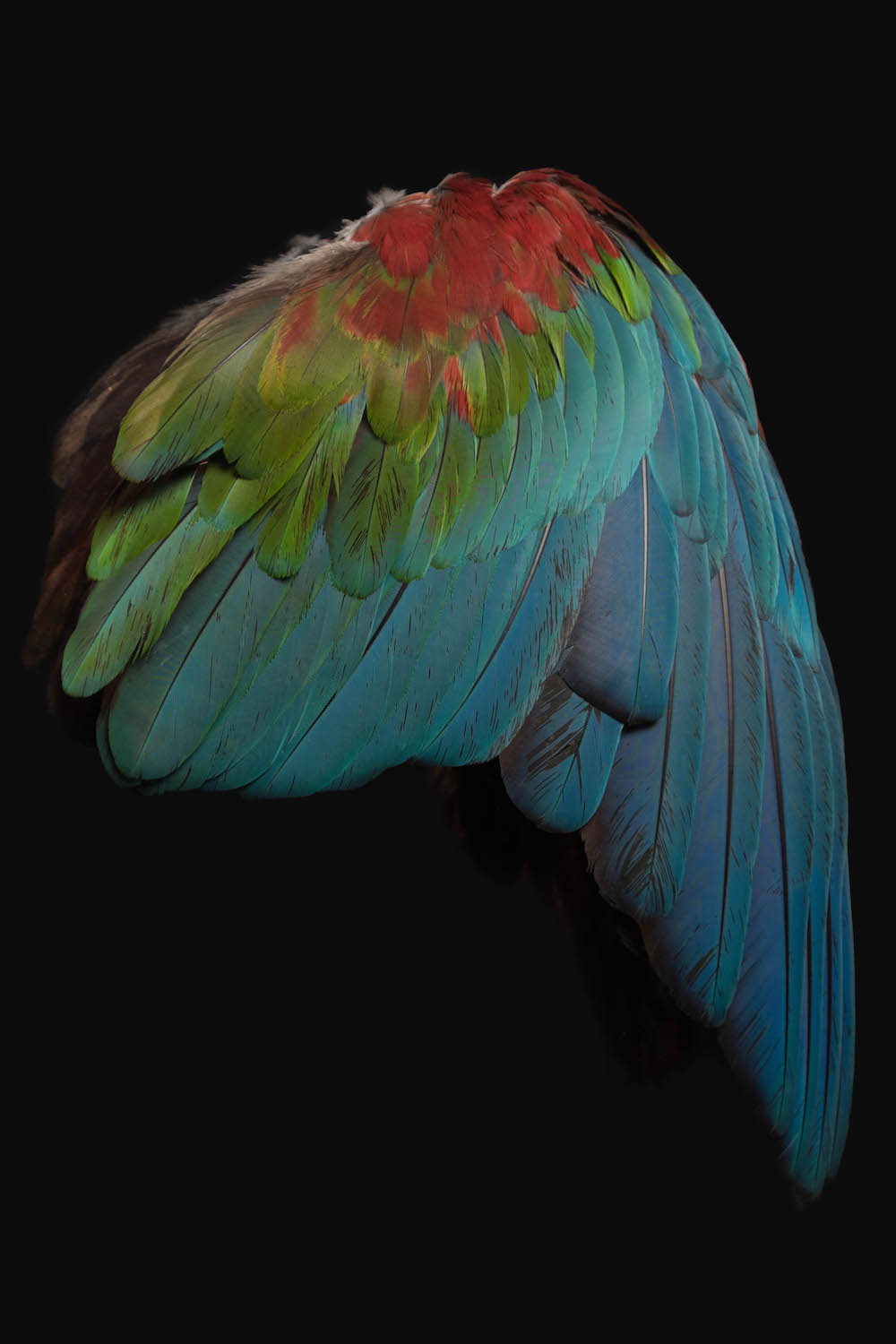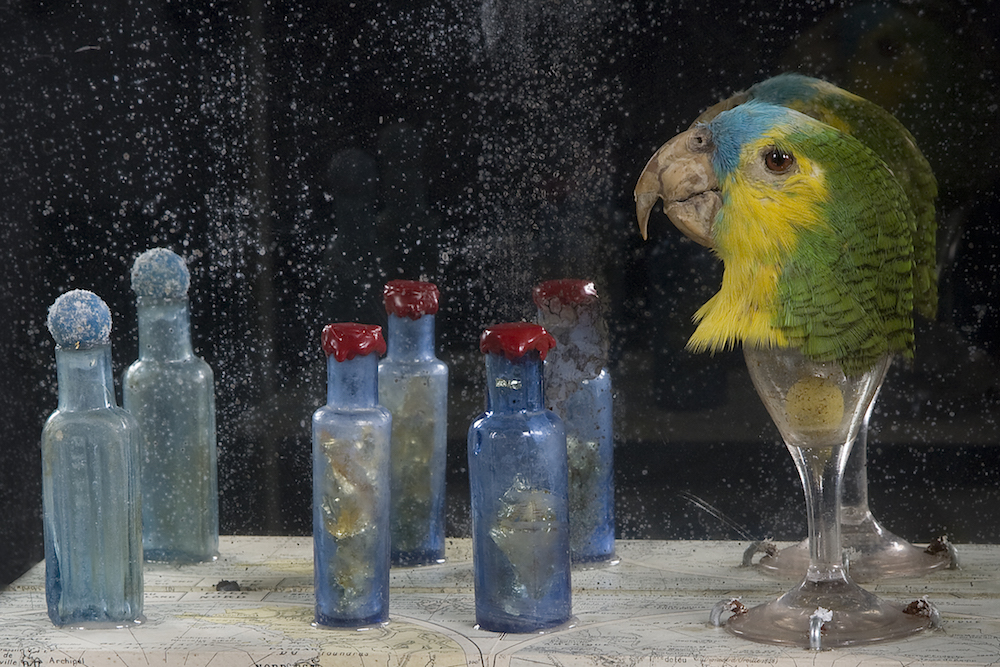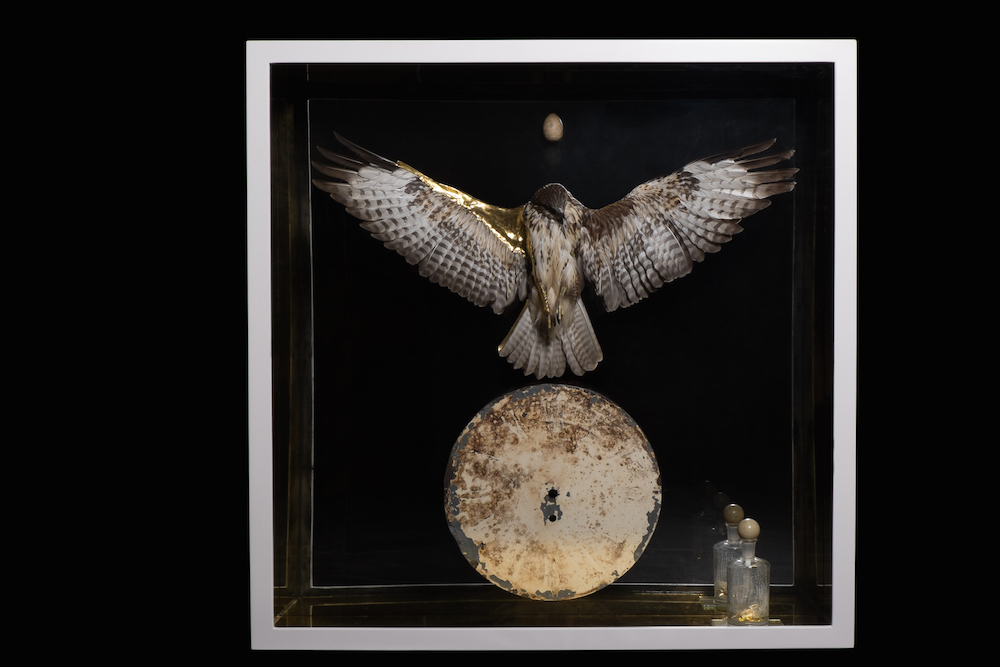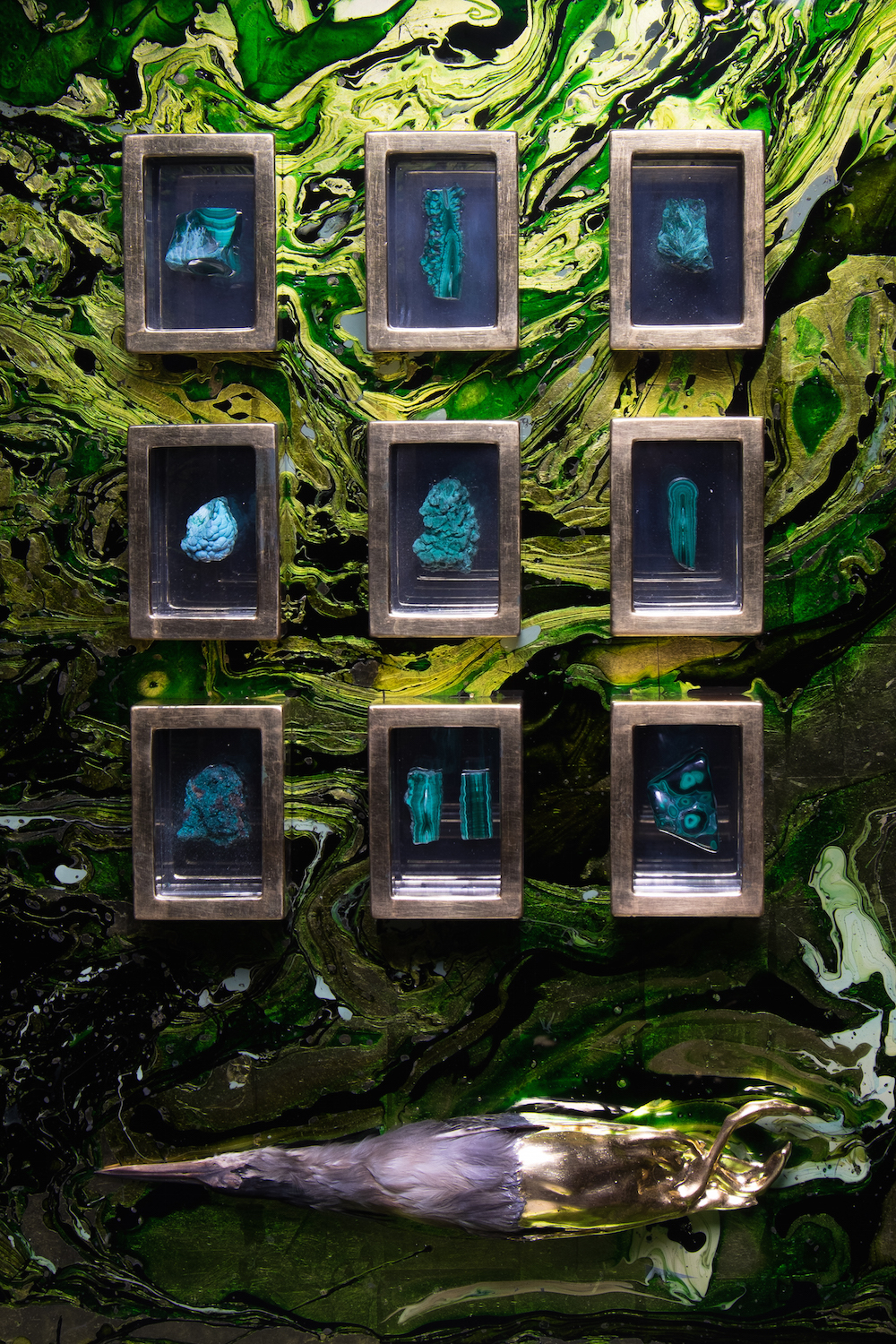Paul Broomfield is a taxidermy assemblage artist living and working in North Devon. His work can be seen at Broomhill Sculpture Park Gallery near Barnstaple and will be included in an upcoming London group show on the topic of memento mori curated by Lee Sharrock, Director of Global Creative PR at Saatchi & Saatchi.
What’s the point of it?
I’m curious about everything and making art is a good way of exploring that state of curiosity.
Why do you think there has been a resurgence of taxidermy of late?
Damien Hirst was one of the first to revive it. His work, love it or hate it, is a phenomenon. My grandparents had taxidermy in its pure naturalistic form at home – it was considered Victorian and outdated. Now it’s in Harrods windows, like tattoos it has hit the mainstream. There’s also a renewed interest in the study of natural history, we’re at a point in time when more people are asking more questions about other species and the art world reflects that.
Where do you source your objects and animals?
I wouldn’t kill an animal for art’s sake alone. I’m very aware of the ecological damage that trophy hunting and taxidermy have had in the past and am concerned about humanity’s exploitation of the earth. Around eighty percent of them come from repurposed vintage taxidermy. The other twenty percent comes from roadkill and found carcasses, I’ve got two chest freezers full of bodies. You have to find them while they’re fresh – within 12 hours, less in warm weather. They become unusable once slip sets in to scales, fur or feathers. A local fishery passes on fish that die of natural causes. I sometimes have to put a commission on hold until the right animal turns up. The other objects are accumulated at auctions, antique fairs and online. I frequented a lot of brocantes during the five years I lived in France.
Who, or what, are your main influences and inspirations?
The biggest single thing to capture my interest is nature. I try to be in it as much as possible, surfing and fishing on the North Devon coast where I live. The experience of being surrounded by raw colours, sounds and textures triggers the urge to create art. There are Proustian references underlying my whole practice. À la recherche du temps perdu (later translated as Remembrance of Things Past and In Search of Lost Time) sums up my attempts to capture moments — how objects can become loaded with personal meaning linked to involuntary memories and, like the madeleines tasted at the house of the narrator’s grandmother, become an iconic symbol connected to the mood of a time.
In which ways do you identify with the notion of the ‘outsider’?
I have no formal art training, I wanted to go to art school but my parents disapproved of the idea and I ended up doing an apprenticeship as a paintings and decorative surfaces conservator. Now I’m glad of the route I took. I’ve met people who seem restricted by their education, not being trained seems to allow a freedom of thought and work and a trust in one’s own experience. I developed artisan skills at the Tankerdale Workshops, advisors to the National Trust which led to projects at museums, galleries and in private collections. It was an amazing grounding — working with carpentry, gesso, gilding and verre églomisé processes, but I didn’t find it stimulating long term. I’m also bi-polar. I’d prefer not to be labelled at all, but it’s inevitable. Being an outsider artist assists in keeping one’s liberty.









